Case Study: From Potato Skin to Pet Food
How your bakery waste can fuel the circular economy
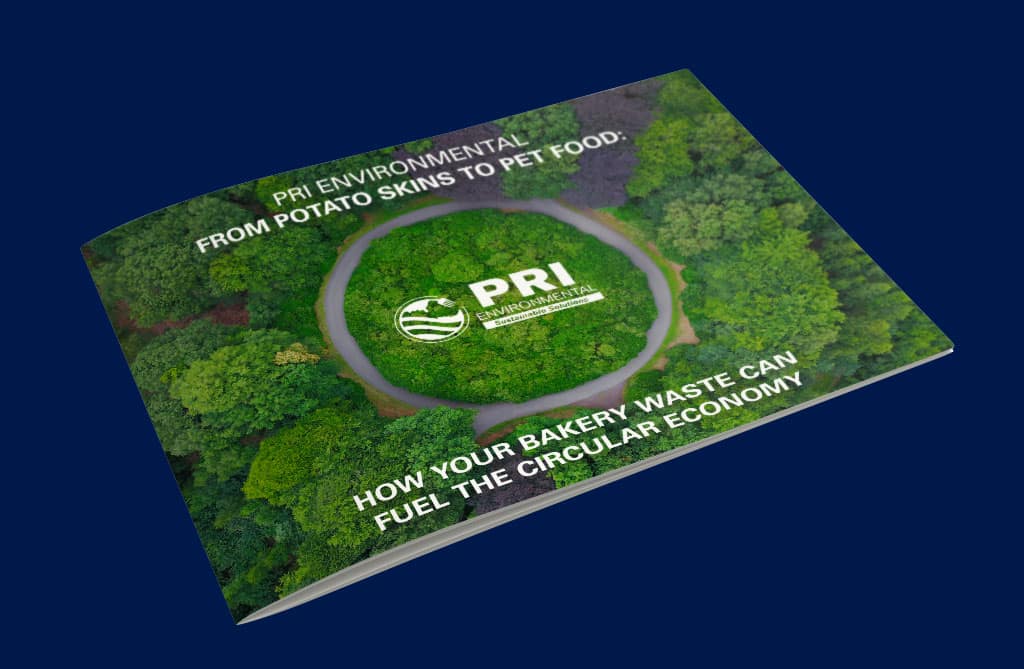
Don't have time to read the article now? Download the case study and read it at your convenience!
Download Case Study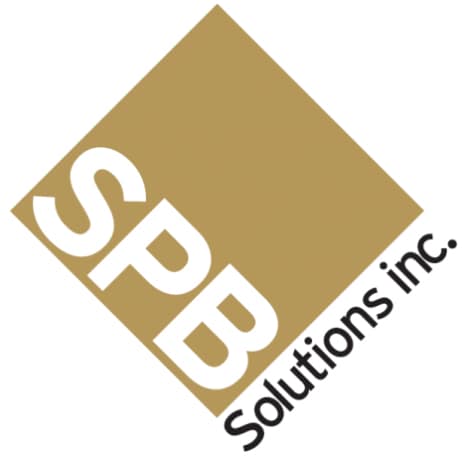
SPB Solutions collects bakery food waste and select other food waste streams, to process into valuable ingredients for animal feed and pet food.
Waste Inputs
Flour, baked goods, raw dough, pasta, cereal, crackers, other mixed products.
End Products
Ingredients in animal feed (e.g. fish, poultry, livestock) and pet food.
Production Capacity
1,400 tonnes/week in Ontario.
1,100 tonnes/week in Quebec.
Value Generated
$50-$100/tonne on average by upcycling bakery food waste.
PRI's Partner in Transforming Food Waste
SPB is a Canadian leader in food and agricultural by-products recovery and collection. SPB diverts bakery waste from landfills and recovers the value by producing high-quality animal feed ingredients.
- 60+ years of experience.
- Ontario + Quebec.
- Entire food by-product management cycle.
- Animal feed recipes developed by livestock nutritionists.
- Up to 2,500 tonnes of food waste processed per week.
- Up to 1,315 tonnes of CO2 saved per week.
The Process: How it Works
SPB's internally developed processes reengineer, process, and convert the collected food waste and produces high-quality products for animal feed manufacturers.
Here is SPB's production process:
1. On-site collection
2. Transportation
3. Target re-engineering and processing
a. Debagging
b. Mixing
c. Drying & Cooling
d. Quality Assurance
4. Sale of final product to end user
On-site Collection & Transportation
SPB collects several different types of food waste — from potato skins to cookies. SPB has all the necessary equipment and resources to seamlessly collect and process waste from their clients' facilities, including:
- Compactors
- Trailers equipped with moving floors
- Vestibules
- Dumpers and weight systems with telecom modems
- Data management solutions
All of this ensures your waste is picked up and distributed on time and without additional work from your end.

Leave your waste in its packaging
SPB's collection systems allow for waste to be collected with packaging, making the process less cost- and resource-intensive for their clients. A turbo separator separates the product from its packaging. Then, the clean product is taken through multiple screens and magnets to ensure only food waste remains.

Target Re-Engineering & Processing
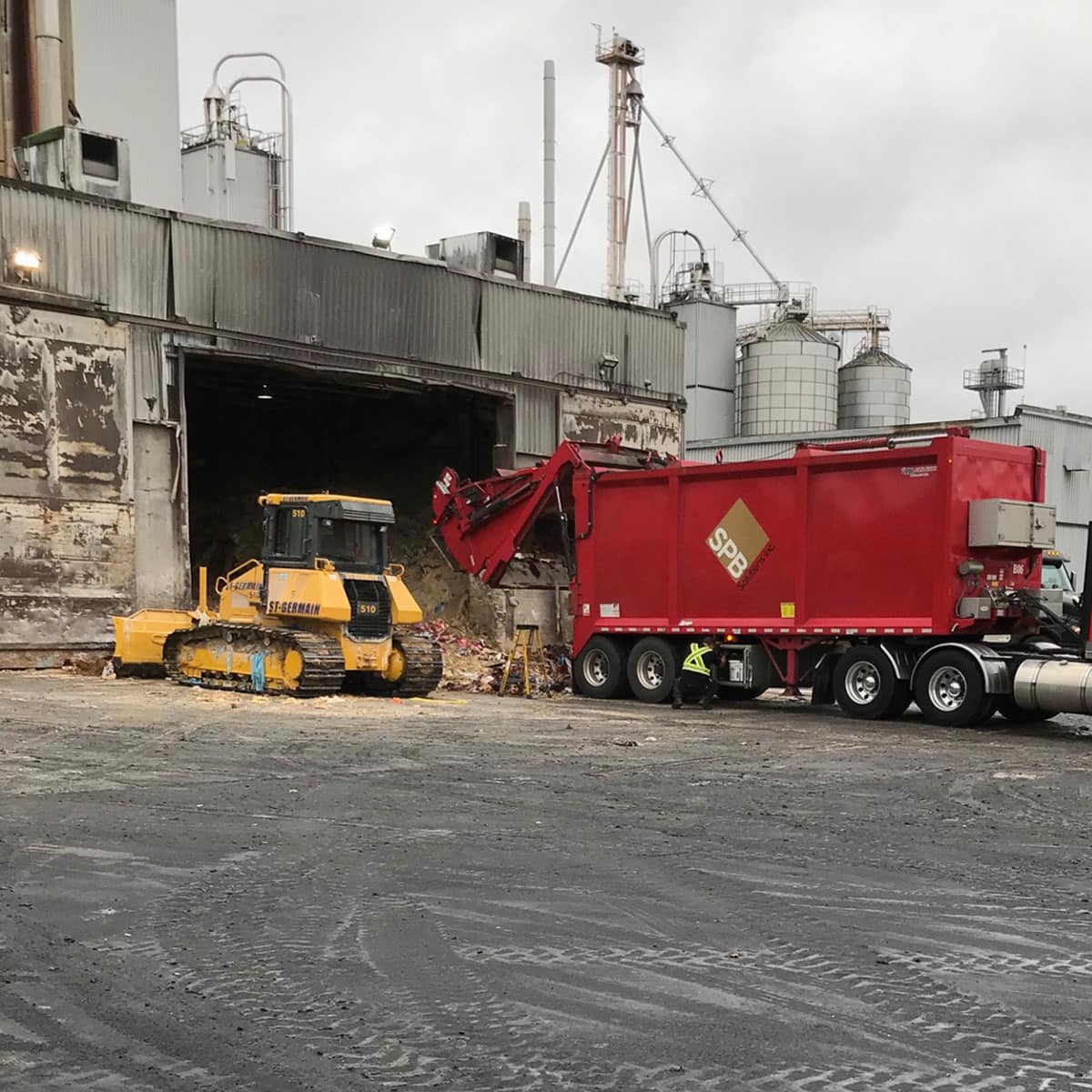
1. Debagging
All incoming raw materials are debagged, strained, and put through magnetic processes to clear any unwanted material.
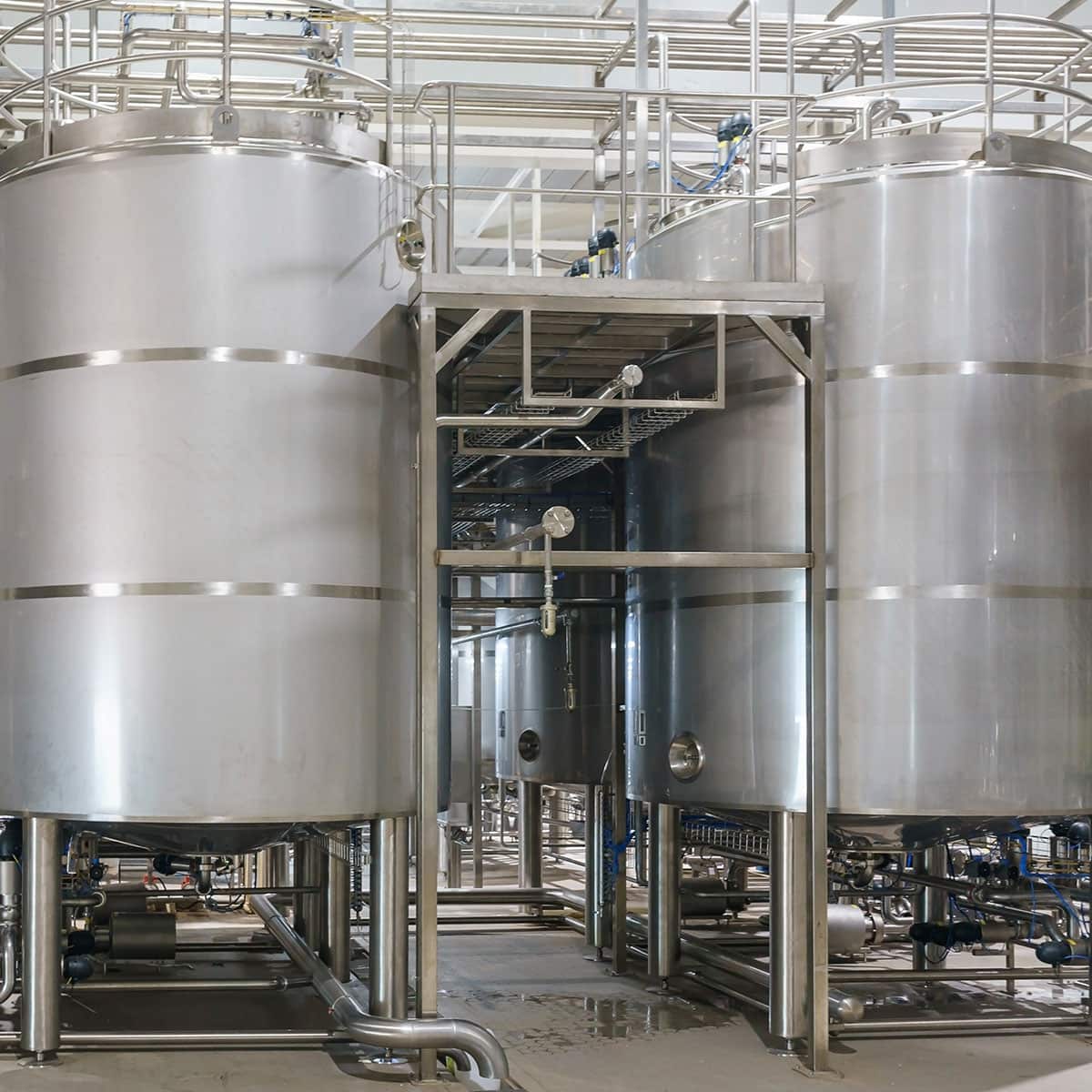
2. Mixing
Using recipes developed by SPB nutritionists, the team blends the clear raw materials to ensure that the nutrient profile is consistent and the feed is palatable.
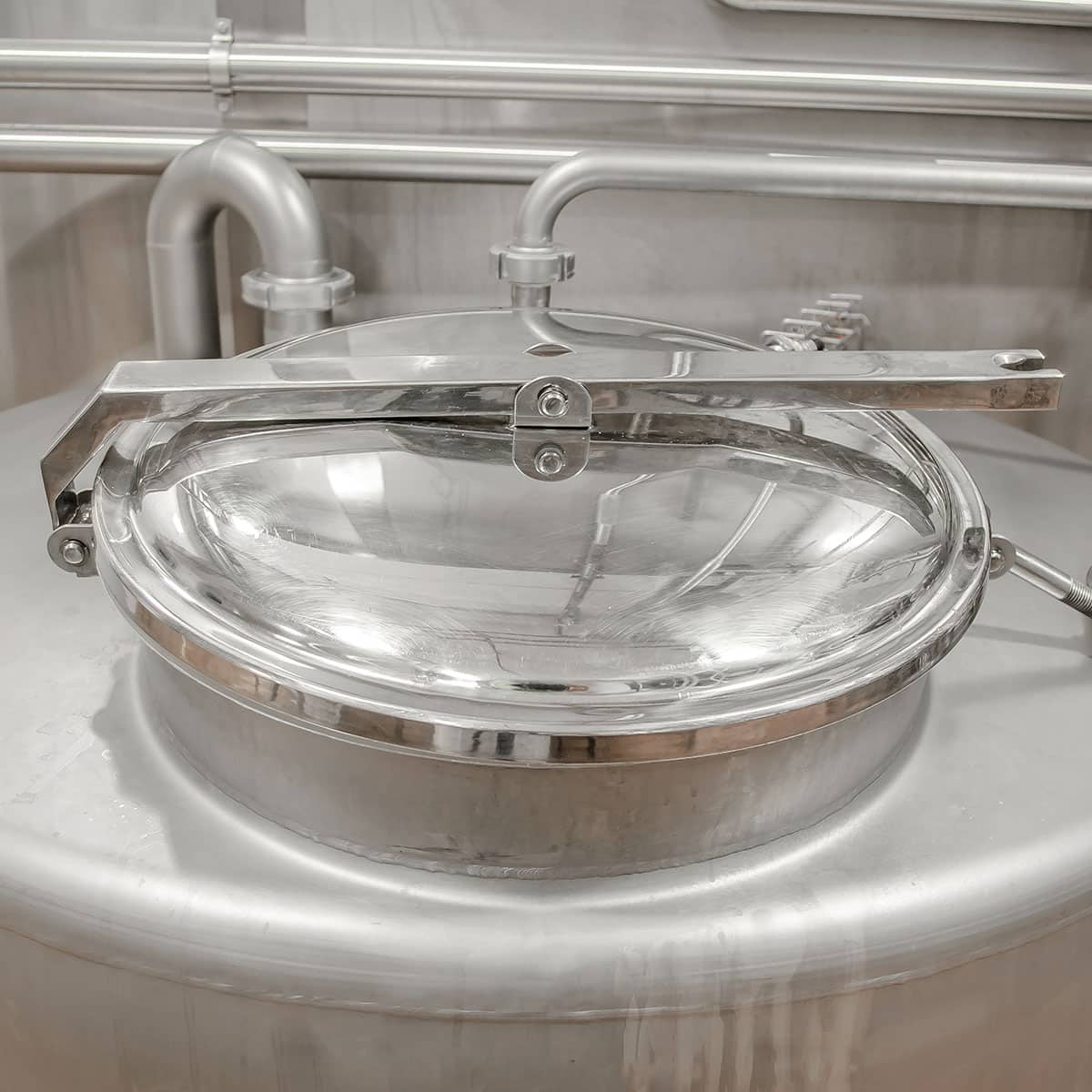
3. Drying
The product is heated up to remove any remaining bacteria, and cooked to ensure all raw dough or other materials are in a workable consistency and safe for animal consumption.
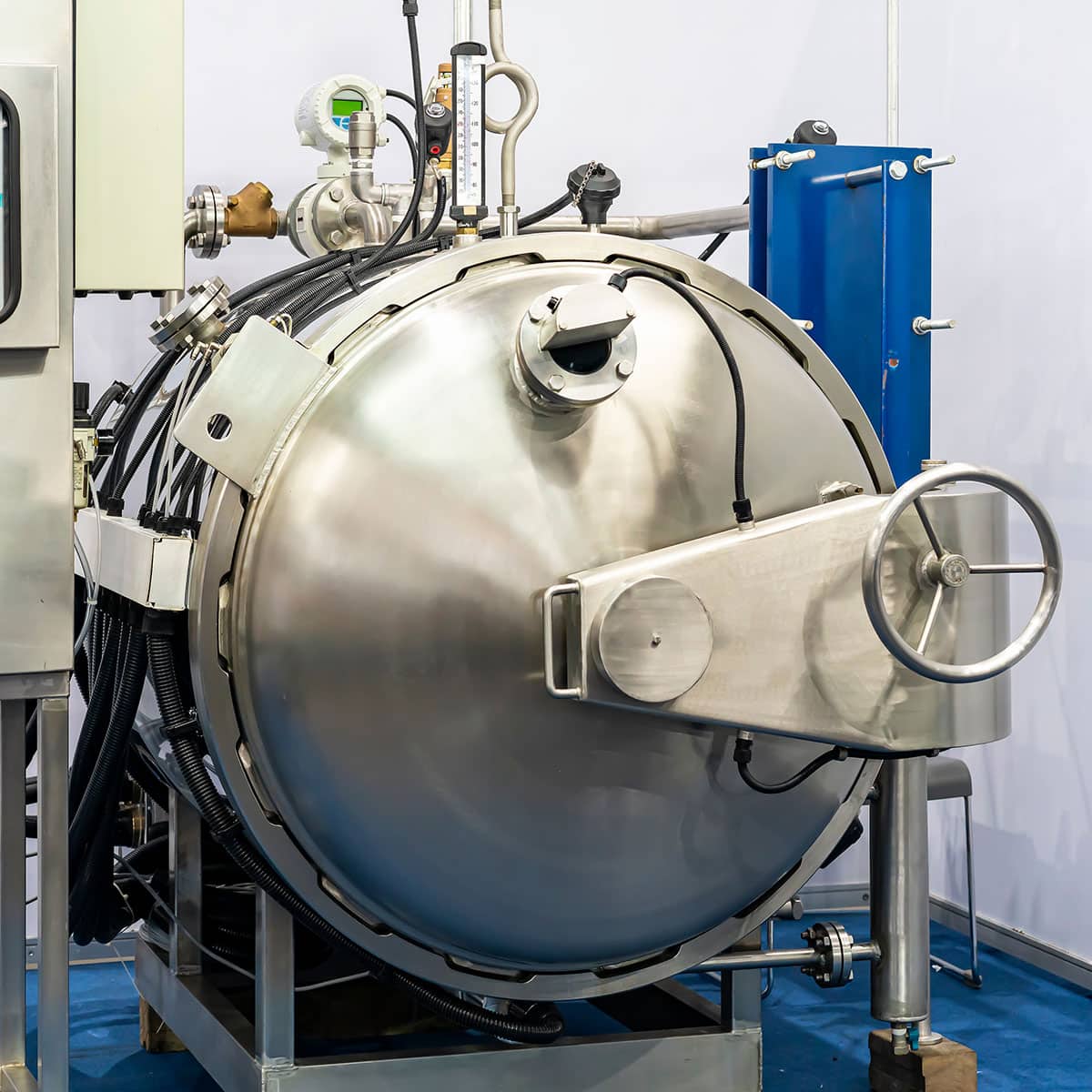
4. Cooling
The cooling process removes excess moisture from the mixture and ensures the final product is ready for quality assurance and packaging.
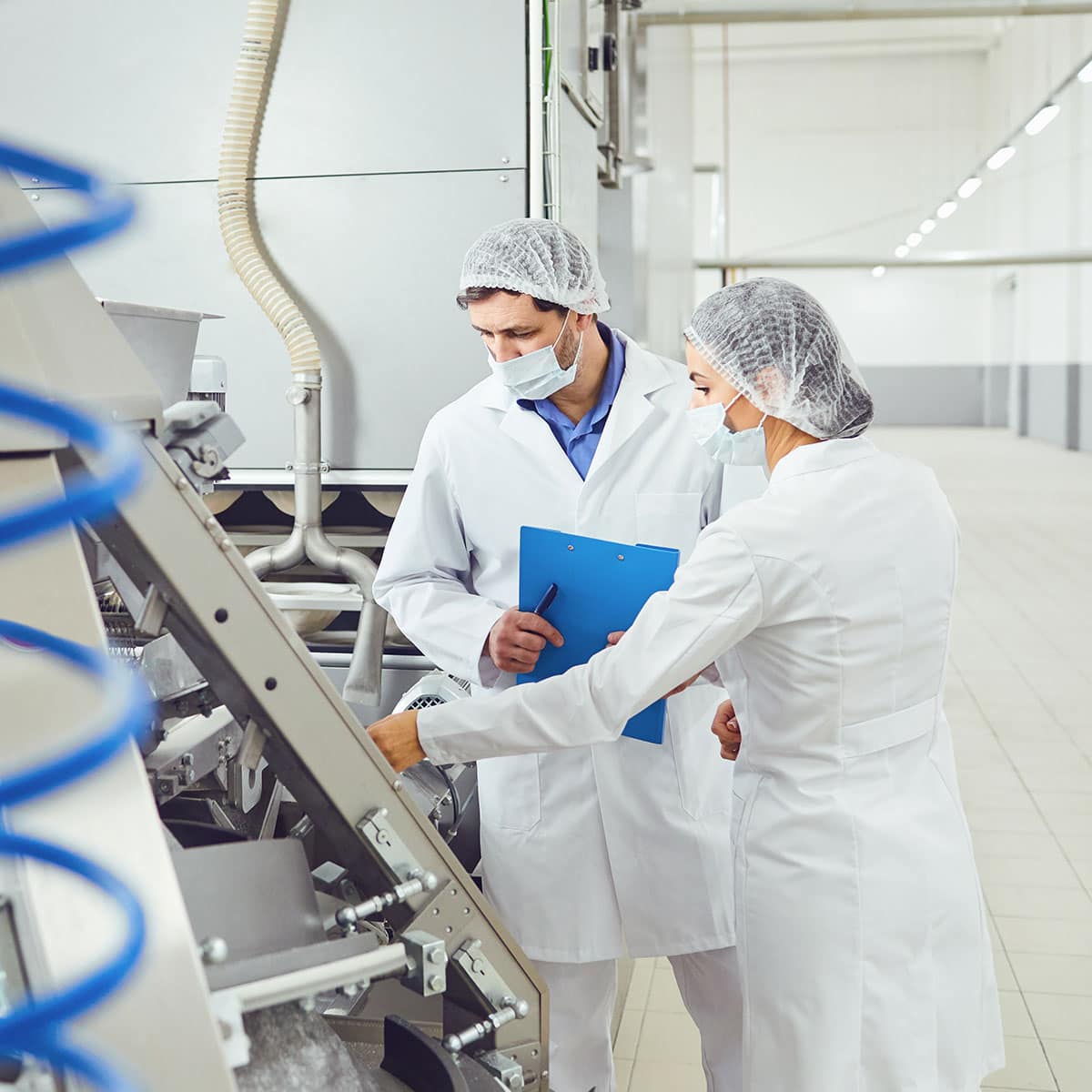
5. Quality Assurance
A rigorous quality assurance check ensures that the moisture content and nutritional value of the animal feed meets internal requirements. SPB samples its products daily and sends weekly composites to ensure the highest levels of quality and consistency.
Additionally, SPB prioritizes maintaining suppliers to minimize changes in the process and engages nutritionists regularly to adapt recipes based on the needs of their animal feed buyers.
Sale of Final Product
The final product is then shipped off to live-stock feed mills for use by fish, poultry, or livestock. SPB has two main products: ENERGRO®, and INGENEX.
ENERGRO®
A combination of inedible bakery waste, sweet goods, and chips (corn/potatoes) recovered from the food industry. ENERGRO® is:
- Highly palatable (cooked starch, fats, and sugar)
- Highly digestible (cooked starch)
- Energy-dense
- Sanitized (heat dried)
These attributes and its handling ease make it an attractive value-added feed ingredient for poultry, swine feeds and pet foods.
INGENEX is an ingredient ideally developed for swine and poultry diets.
INGENEX is:
- High fat (ensures that it is a sufficient source of energy)
- Low sodium
Adding INGENEX to swine and poultry feed can measurably improve pellet quality.
Start Capitalizing On Your Waste Streams
If you're ready to divert your food waste into a business and environmental opportunity, talk to PRI Environmental today.
